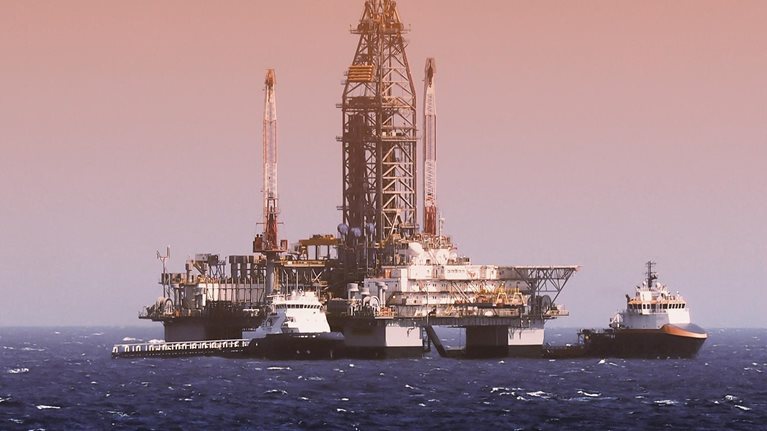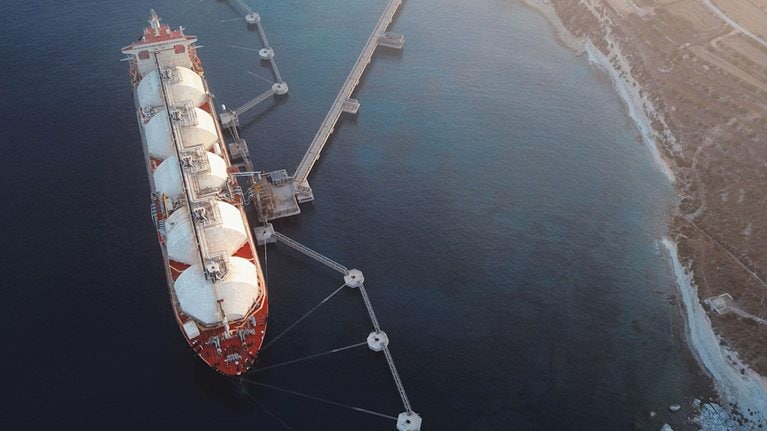Most integrated gas players have experienced earnings pressure from the 2020 down cycle in gas prices. Because of this, they are becoming bigger, more diversified, and more dependent on third-party volumes. LNG producers are also developing greater flexibility and are investing in building stronger commercial capabilities, such as origination, trading, optimization, strategy, and marketing. Many aspire to capture incremental margins from global arbitrage opportunities and better manage the risks of market disruptions.
This past year has been a perfect storm of market disruption brought on by supply overcapacity and reduced demand fueled by the COVID-19 pandemic’s effect on economic activity. To see how producers performed in this environment, we conducted two analyses to compare the performance of traditional integrated producers such as marketers with portfolio optimizers.1 Even though most producers have been severely affected by market disruption, our analyses revealed that portfolio optimizers generally outperform those with traditional business models during severe downturns.
While the analyses evaluate the performance of LNG producers specifically, the implications are relevant for all players across the LNG commercialization value chain that want to capture the full value of their portfolios and manage risk. Integrated LNG players that want to pursue a porfolio-optimization business model should focus their efforts in three areas: understanding strengths and weaknesses in the current market, exploring moves to expand and strengthen the portfolio, and developing advanced LNG optimization and risk-management capabilities.
Differences in performance: Marketers versus portfolio optimizers
While the pandemic has affected economic activity, the LNG industry was already on the path to overcapacity. Compared with the start of 2019, for instance, there has been a 6 percent increase in active LNG liquefaction capacity; and with European gas demand down by 5 percent in the first half of 2020, regional prices dropped to record lows, converging to below $2 per one million British thermal units in June and July 2020 (Exhibit 1), though gas prices started improving in third quarter 2020.

To see how LNG producers fare in this environment, we conducted two analyses: a financial reporting analysis and a bottom-up, outside-in modeling exercise. In both cases we compared the performance of two LNG producer archetypes: marketers and portfolio optimizers (Exhibit 2).

Our findings in both instances indicate that producers that operate as portfolio optimizers achieved superior performance amid the recent market disruption when compared with marketers that used traditional point-to-point marketing models.2
Financial reporting analysis
Lack of transparency in reporting3 and the lag in impact on LNG long-term contract prices have made it harder to assess the true impact of recent events on marketers versus optimizers.4 We have, however, attempted to compare how the realized gas prices of three of the most advanced portfolio players developed against the realized prices of two typical upstream marketers.
The analysis indicates that in third quarter 2020, traditional marketers saw a 47 percent decline5 in realized prices compared with third quarter 2019, whereas the portfolio optimizers saw a 31 percent decline in realized prices over the same period (Exhibit 3). Although there are some obvious shortcomings in this comparison—for example, the declines could be due to different geographic presences or a time lag on indexation—the findings do suggest that in the gas industry, portfolio optimizers were less affected by the recent downturn.

Bottom-up and outside-in modeling
To better understand how significantly operating models affect earnings before interest, taxes, depreciation, and amortization (EBITDA), we modeled the performance of two LNG players with the same assets but different operating models.6 Player A is an illustrative example of a marketer with a liquefaction portfolio that sells the volumes from each liquefaction position through a flexible, long-term contract that goes directly to a fixed set of buyers. Player B is a real-life portfolio optimizer with the same liquefaction assets, but with an additional portfolio of mostly free-on-board third-party offtake contracts,7 and access to LNG spot markets across the globe.
We typically use the optimization model to understand the value of portfolio optimization in future price scenarios, but in this case we used the actual prices over the past 18 months, taking into account a time lag on long-term contracts.
The findings show that both players have been severely hit—especially on upstream margins due to absolute-price decreases and on portfolio value—because of different prices narrowing. But because the value of Player B’s short-term optimization activities increased, its overall decline in EBITDA has been less severe compared with Player A (Exhibit 4).

Player B’s short-term optimization activities included six tactics:
- Practicing price arbitrage across regional gas markets, such as between the United States (Henry Hub), Europe (TTF), and Asia and global LNG (JKM and oil-linked contracts), which underwent significant disruptions and moved out of sync
- Securing an integrated spread through the entire gas value chain; for instance, monetizing price differentials between gas and electricity for European positions
- Practicing time arbitrage, or using regasification storage—occasionally floating LNG storage—to its advantage in Europe when selling gas for more than the spot price
- Pursuing volume flexibilities by reallocating cargoes from spot-lifting regions (such as the United States and Australia) to some higher-priced, oil-linked sale and purchase agreements (SPAs), and exercising downward volume-flexibility options and carry-forward options8 across the entire SPA portfolio
- Optimizing shipping through time-charter positions—that is, reallocating charters between routes and revising strategies for where to reposition ships after spot commitments are met
- Finding market opportunities for other market players by extracting value from medium-term commitment options by, for instance, offering call options (for two to five years) on cargoes going to clients that paid a premium, given the uncertainty of future LNG spot-price curves
Portfolio optimizers can monetize these opportunities because they have flexible portfolios and advanced commercial capabilities with superior logistics and access to liquidity—through regasification and direct relationships with buyers—across basins.
To illustrate the differences between business models in practice, we analyzed the actual LNG flows from two liquefaction assets: one owned by players with a more traditional marketing model and one owned by players that employ a portfolio-optimization model.
We tracked flows from both players’ liquefaction plants and found that the portfolio optimizer shipped to 31 separate markets in 2019, whereas the marketer served only five markets (Exhibit 5). Flows from the optimizer also changed cargo destinations much more often; of the 23 markets served across either second quarter 2019 or second quarter 2020, 12 markets were not served in both years. For the traditional marketer, 40 percent of their markets were served during both years. These findings clearly indicate that the portfolio optimizers use their assets to capture opportunities across a wide variety of markets and can monetize their optionality, whereas the marketers supplied a steady flow into a few end markets.

Business-model transformation
LNG players that want to adopt a portfolio-optimization business model should focus their efforts in three areas.
Understand the strengths and weaknesses of the current portfolio
Traditional players should first survey their current portfolio positioning and capabilities to see whether optimization is the right strategic option for them.
Does the portfolio have sufficient scale? Smaller, concentrated portfolios (less than five million tons per annum) often have less optimization value and do not warrant setting up optimization capabilities.
Is the portfolio missing key assets? Portfolio optimization is enhanced through the combination of equity and third-party offtake volumes, access to spot LNG markets, regasification capacity and hub access, and positions in multiple basins. Producers should review their current portfolio against these assets to see where gaps exist.
Would you like to learn more about our Oil & Gas Practice?
What is the current portfolio risk? Some portfolios respond differently to changes in commodity prices, increased volatility, or the drying up of spot markets due to differences in spot versus long-term contracted volumes, long-term contract price indexations, contract volume flexibilities (obtained or committed), or market access (direct hub access, paper trading capabilities). LNG players need a clear understanding of what can happen to the profitability of their portfolios in different market scenarios.
Explore moves to expand and strengthen the portfolio
Once LNG players have assessed their starting point, they should make strategic decisions to optimize their portfolio. Most leading players focus their efforts on M&A, third-party assets, and alliance building.
What M&A options could help build the portfolio? Many leading portfolio players have actively expanded their LNG portfolios through acquisitions. For example, Shell acquired Repsol’s LNG assets in 20149 and BG’s in 2016,10 building the largest LNG portfolio of all majors and further solidifying its presence in Africa. Pavilion acquired Iberdrola’s LNG assets in 2019 to expand into Europe and the Atlantic basin.11
Triggered by capital constraints, the industry is also starting to focus more on merger opportunities where players can consolidate their portfolios into a dedicated vehicle and free up capital for parent companies.
How can the organization access third-party assets to extract additional value? The large international oil companies and trading houses have been building their portfolios through third-party offtake agreements—for instance, independent producers in the United States providing flexible volumes at a Henry Hub price indexation.12 Further downstream, players are obtaining access to third-party asset capacity. Examples include Uniper’s deal with Pavilion,13 which provides access to each other’s LNG assets, or several producers booking regasification capacity in Europe.
How can the organization form alliances and joint ventures to capture synergies with other LNG portfolios? Instead of investing large amounts of capital in resources or midstream assets, portfolio-optimization benefits can be obtained by partnering with other players, as seen in the partnerships between Commonwealth LNG and Gunvor in the United States14 or ENH and Vitol in Mozambique.15
Develop advanced LNG portfolio-optimization and risk-management capabilities
If LNG players want to play the game and do it well, they will need the right talent and technologies in place.
What new talent can enable portfolio optimization? Responsibly capturing the full value from a portfolio requires building more advanced trading, optimization, and risk-management capabilities that can support the business model shift. To do so, players will need people with the right mix of skills to help transform organizational capabilities.
How can new technologies and tools support portfolio optimization? Portfolio optimization can be challenging; strong advanced analytics capabilities are essential to support day-to-day decision making. Using nontraditional data sources, such as vessel tracking or satellite imagery, and advanced-analytics technologies, such as machine learning, can support even better optimization decisions. For instance, LNG portfolio players can use these tools to make scheduling and dispatching decisions to capture time-arbitrage opportunities or strategically redirect cargoes to monetize geographic-arbitrage opportunities, further enhancing optimization value.
Portfolio optimization will be critical to LNG players that want to navigate current and future market disruptions. Indeed, those that invest in optimization capabilities and larger, more flexible portfolios will be better able to adjust to changing market dynamics, explore more market opportunities, and achieve long-term resilience. From a broader perspective, portfolio optimizers can also have a positive impact on the energy market by reducing inefficiencies and making the overall system more resistant to shocks, leading to more affordable, uninterrupted energy available to communities around the world. For example, portfolio players served an important role in redirecting volumes originally destined for China to Europe, and vice versa, during the pandemic. Whatever the future holds, portfolio optimization can help LNG players improve their risk-management capabilities and remain flexible.


